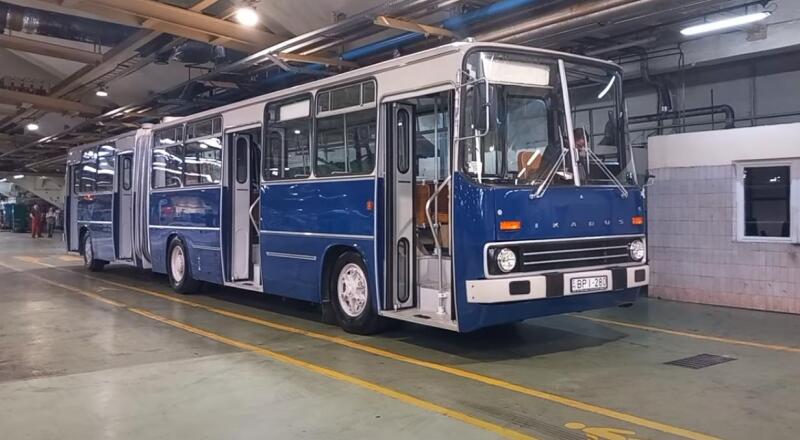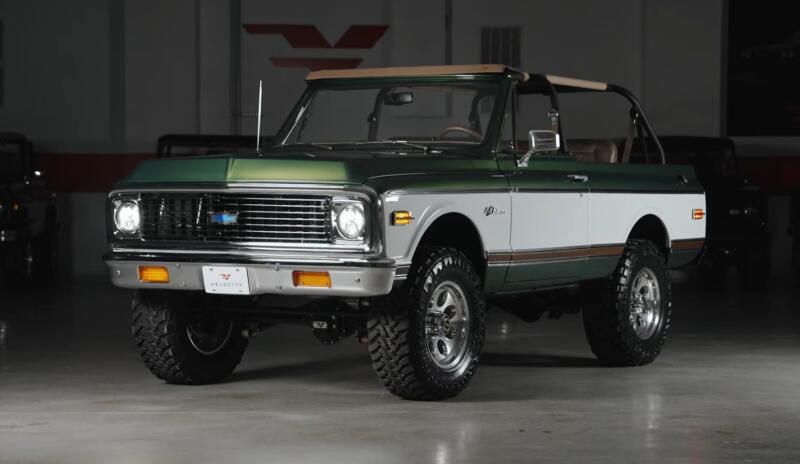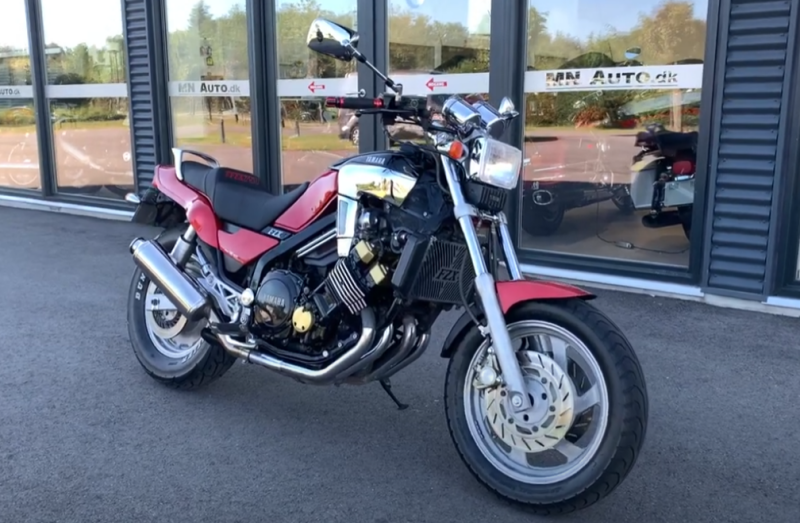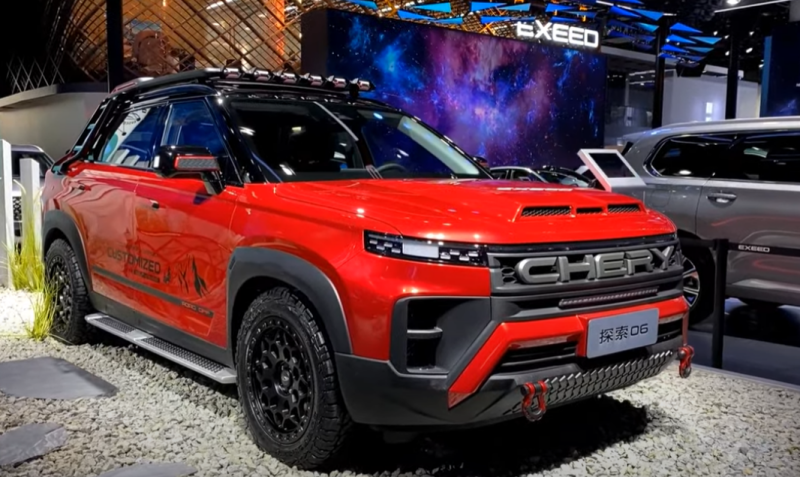For many decades, light two-wheeled vehicles reminded everyone with their name that they inherited the internal combustion engine from a motorcycle and the pedal from a bicycle. She was chosen as the second number, in addition to a full-fledged motorcycle (which could also be with a side trailer) or a car. Young people who have already grown out of “pants of non-motorized trips” were trained on the same technique. The elderly, who needed a means of transportation, sometimes also preferred a low-powered moped.
 Jawetta Sport was produced in a two-tone version. Photo: youtube.com
Jawetta Sport was produced in a two-tone version. Photo: youtube.comAs you can see, such devices had a lot of fans in different age and social categories. Add to this the fact that drivers of small-capacity vehicles did not need to register and issue a driver's license. I will not sin against the truth if I say that the demand for them at all times remained at a very high level.
And this situation was observed not only in our country. For example, the birthplace of the legendary JAWA also had laws exempting owners of vehicles with an engine capacity of up to 50 cubic meters. see from registration of rights, license plate and payment of road tax. However, the latter logically followed from the previous two. If the owner has not been “lit up” anywhere in government agencies, then it is rather problematic to take a tax from him. I’ll make a reservation right away that in the pre-war period, the bar for free use was even higher - 100 cubic meters. see Basically, almost a light motorcycle. But with pedals, and without the need for its design - a very profitable thing.
Filling the market after the vacuum of the 40s
The most popular Czechoslovak mopeds of the pre-war period can be considered the CZ 98 and JAWA 100 Robot. But in the fourth decade, due to the war and post-war reconstruction, the production of light motor vehicles was not carried out. But filling the demanded sector was only a matter of time.
Since the beginning of the 50s, the main motorcycle plant of the country has been developing a promising model. She became JAWA 50 Jawetta. It was produced from 1958 to 1962 at the plant. May 9 in Nusli (Prague).
The new moped turned out to be very advanced for that time and practically had no competitors in its class. Some even compared the Jawetta to the legendary Perak, who also stood head and shoulders above his contemporaries. In total, four versions of the popular moped left the assembly line (two basic and two sports):
✅ 551/00 Standard
✅ 551/01 De Luxe
✅ 551/02 Sport
✅ 551/03 Sport special
The last two options were not only faster, but also had increased engine power. All of them were called Jawetta, which was a diminutive of the name of the main brand. We note right away that it has nothing to do with the first attempts to create such equipment, carried out in the Slovak mechanical workshops of Povage.
 Gear shifting was carried out on the steering wheel. Photo: youtube.com
Gear shifting was carried out on the steering wheel. Photo: youtube.comThe thing is that during the design research of the first half of the decade and the processing of archival drawing documentation, several prototypes of the JAWA 1954 were born in 359. Over time, they were given for production to the Slovak enterprise Povazske strojaren. But this is a completely different development, not related to the model, which is discussed in today's material.
Technical execution of the model
It is worth noting that the time of the war was a powerful impetus for the development of technology with internal combustion engines. In the next decade, a 100cc engine was no longer required to achieve the desired performance. It turned out that a power unit with half the volume was enough. Slovak specialists reacted to legislative changes from 1955 (restrictions for “disenfranchised” vehicles in terms of maximum speed, ratio of mass, power and engine displacement up to 50 cc). This is how JAWA 550 Pionyr appeared.
 The 50 cc engine was located below. Photo: youtube.com
The 50 cc engine was located below. Photo: youtube.comNow the matter remained small: the creation of a similar, but less demanding machine, corresponding to the classification "moped". By 1956, several prototypes were prepared, which were presented at the Brno engineering fair of the same year. The final touch was the development of two new engines of the Fichtel & Sachs series "551" and "552", with the maximum number of interchangeable parts.
The body of the moped was welded from two deep-drawn metal sheet forgings. Strength they added transverse ribs. The addition of vertical reinforcement was the method of installing the fuel tank - in the cavity under the steering wheel. Something similar was repeated in the Soviet "Rigs" of a later period. The rear swing fork was suspended on a single coil spring under the seat. Its pin went through the heaviest part of the structure - the power unit. It also served as a longitudinal reinforcement of the body. The sturdy front fork was unusually hung on rocker arms with a helical spring.
 Round headlight with special housing. Photo: youtube.com
Round headlight with special housing. Photo: youtube.comA bifilament headlight (with elements of high and low beams) was installed in a neat aluminum mask. It consisted of two parts and was attached to the front fork. Other control details were also located here:
✅ light switch
✅ tachometer
✅ chrome buzzer (horn) under the headlight
The first two elements were driven by a worm gear on the front wheel. The deep front fender was firmly attached to the fork. The rear teardrop-shaped lamp with a "diamond" lens, was the same as that of the previous model. But the seats were installed differently. The basic versions have ordinary bicycles mounted on a height-adjustable pipe. On sports versions, the creators put motorcycle-type seats. There was also a different configuration of a more capacious tank. The following characteristics (in brackets - the difference between sports versions):
✅ 2-stroke, single-cylinder engine - 49,8 cc cm
✅ power - 1,5 (2) l. With.
✅ maximum speed - 45 (51) km / h
✅ weight - 47,5 (50,5) kg
✅ fuel consumption - 1,65 (1,8) l / 100 km
✅fuel reserve - 2,7 (6,5) l
The replacement 19-inch wheels had aluminum hubs with drum brakes. The most common color shade was dark cherry ("Javian"). Other colors: cream, green and blue. Sometimes chased shades of green and gray-blue were present. Sports versions often came out in a two-tone design.
Export to the USSR
Soviet cities of the 50s did not yet have dense building blocks. They could not boast of a well-branched network of intracity transport. All this led to the fact that for many “horseless” mopeds were the optimal replacement for daily multi-kilometer hikes. But the Soviet manufacturers of such equipment were just gaining experience and increasing production volumes.
 19 inch narrow wheels. Photo: youtube.com
19 inch narrow wheels. Photo: youtube.comCzechoslovak comrades came to the rescue with their Jawetta. The technique, which even a couple of decades later looked no worse than the Soviet "colleagues" of the early 80s, was then definitely considered the latest technology. Amazing fuel consumption and very smooth running, reliability and durability. But the deliveries were very limited, which did not allow the model to become mass in the USSR (unlike its older, or rather, younger, “brother”). By the way, the price of this pedal miracle also “bited”.
Many happy Soviet owners of such equipment treated it very carefully. This allowed some mopeds to survive to this day. And they remain in full working order, and in most respects they surpass Riga-22 or Karpaty-1. Let me remind you that the latter appeared almost a quarter of a century later - in 1981. I think this is the best confirmation of the high quality of Czechoslovak mopeds.










